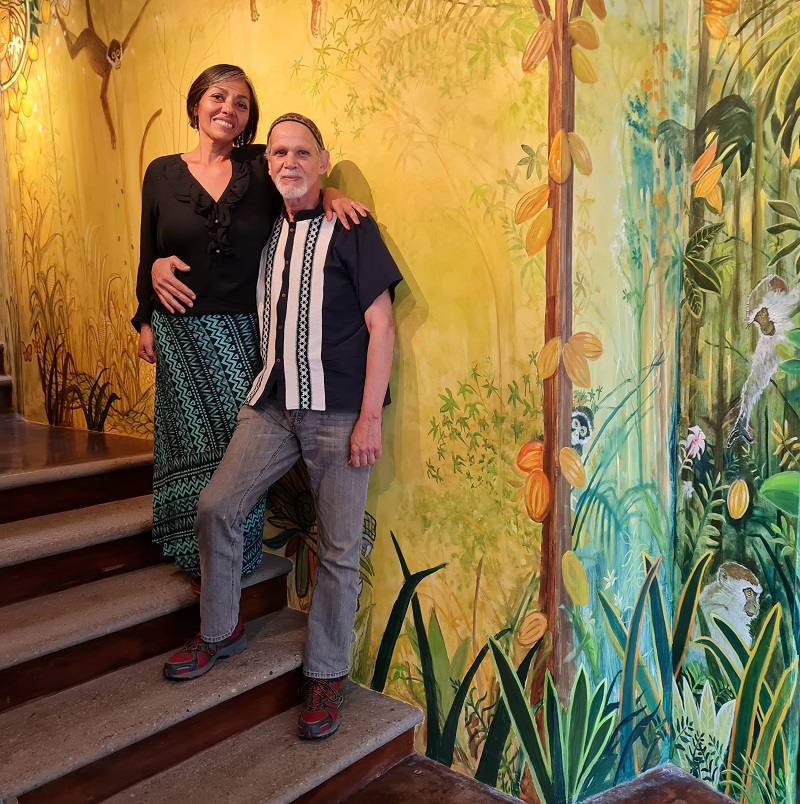By Natalie Taylor
Carlos Caban was born in Manhattan of Puerto Rican parents and grew up in Spanish Harlem. As a little boy, he lay for hours on the floor creating colorful designs with crayons on paper, and his artistic talent was soon recognized. After high school he gained a scholarship to the Pratt Institute of Art. In the 1970s he went to Colombia with the Peace Corp; a transformative experience when he immersed himself in the traditions of the indigenous people. He was integrated into the community and ended up painting graves, particularly of children. Back in Manhattan, he became curator at the art museum in Queens. He then lived for 15 in Puerto Rico when it was considered “the Florence of the Caribbean.” It was here that he truly blossomed as an artist.
But Mexico was always at the back of his mind. He says that if Puerto Rico is his mother, Mexico is his father. When he visited friends in Mexico City, one of them said: “You need to go to San Miguel, it has art and lots of women!” And so he did in 1995, and his work was well received here. Soon he began teaching art at Instituto Allende. Here, one afternoon he ran into a woman who caught his eye.
Vivian Pina is from Santiago de Chile and studied nutrition. Although considerably younger than Carlos, the political unrest he experienced in the 60s was at its peak in Chile during Pinochet’s dictatorship in the 1970s. She became involved in social and feminist issues in college and then through a group called “Agrupacion de Ollas Comunes” (gathering of communal pots), where women cooked together to provide food for the most needy in the community. Vivian helped these women become educated and independent. She also studied visual arts at an art school with a post-modernist outlook, and specialized in “public intervention art.”
A friend in Mexico City invited Vivian to visit, and she came in 1995. She loved it, but thought it would be nice to visit other places. At the Central de Autobuses she walked up to the counter, closed her eyes and pointed at the board. The blind choice turned out to be San Miguel. The day after her arrival she headed to Instituto Allende, met Carlos and they struck up a conversation. They talked about art, life, and the hours flew by. Their connection was real and powerful and in time they made a life together. Their daughter Taina was born in Chile while they lived there, but then they returned to San Miguel and continue to live here. Carlos is busy creating his brilliantly colored paintings influenced by indigenous American cultures; he also paints massive murals for private homes such as the one in the photo.
As he and Vivian sit together, Carlos laughs—“They say that two artists are too much in one family.” But now, he adds, there are three because Taina is a budding playwright whose play may soon be performed.
If you would like to share your story, please write me at: tangonata@gmail.com

